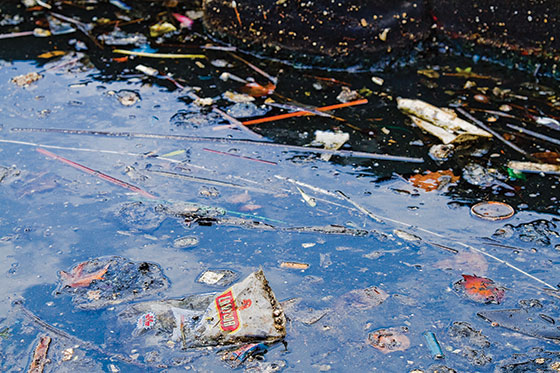
Among America’s most polluted waterways is an East River estuary between Brooklyn and Queens. For 220 years, man filled Newtown Creek with so much industrial ick that the EPA declared it a Superfund site in 2010. One of its polluters, ExxonMobil, recently paid $20 million to help with cleanup efforts, and local groups have until December 18 to propose how to spend it. In the meantime, the EPA will keep sifting through samples to see who else on Newtown’s banks will get the rest of the multimillion-dollar cleanup bill. Here’s what crews can expect to find in those samples.
Oil
In 1950, an underground explosion at the corner of Manhattan Avenue and Huron Street sent manhole covers three stories high. Even before then, bulk-petroleum-storage facilities near the explosion were leaching oil in quantities eventually amounting to more than the Exxon Valdez spill. ExxonMobil, BP, and Chevron have since pumped about 12 million gallons, estimated at about half the total plume, from the canal and surrounding neighborhood.
“Black Mayonnaise”
The creek bottom contains a viscous layer, 25 feet deep in places, of human and industrial waste, decades of accumulation from 1,491 sites, 93 of which were still operational as of 2010. EPA contractors are still working through it, but crews expect to find a range of harmful substances, including arsenic, polychlorinated biphenyls, and cesium-137, a leftover from atmospheric testing of nuclear weapons in the sixties.
Concrete
The early-aughts building boom left behind caustic runoff. In 2005, the city fined Empire Transit Mix, which poured concrete for the Freedom Tower and the New York Times Building (and was once banned from city work for alleged mob ties), for off-loading concrete slurry through a secret pipe. At least two other companies have allegedly dumped concrete waste into the creek. Some discharges registered a pH of twelve, on par with household ammonia.
Liquid Cow
One of the neighborhood’s most notorious smells originated in 1855 at the Peter van Iderstine plant, which turned butchers’ offal (and at least one ten-ton circus elephant named Emily) into animal feed, fertilizer, and glue. In 1973, the company was charged with contaminating the creek with animal fats. When it closed in 1977, an EPA official told the New York Times: “I’ve had people call up and say, ‘I’ve got a smell like a burning cow.’ ”
Raw Sewage
When it rains, shit pours into the creek from 23 legally permitted locations. The city’s been dumping raw sewage into the waterway since 1866; today, it usually happens when waste-treatment plants reach capacity. As new development strains the city’s limits, says Kate Zidar of the Newtown Creek Alliance, the margin between rainfall and sewage overflow narrows, and keeping the creek muck-free becomes more difficult.
Consumer Waste
During sewage-overflow events, street runoff sends a slick of garbage into the creek. What goes down the grates—brake-pad residue, discarded cigarette butts, condoms, dead rats—drains into the creek from an artificial watershed. “Anything that gets washed off the street ends up in Newtown Creek,” neighborhood activist Mitch Waxman says. “The top layer of sediment is all MetroCards.”
Have good intel? Send tips to intel@nymag.com.